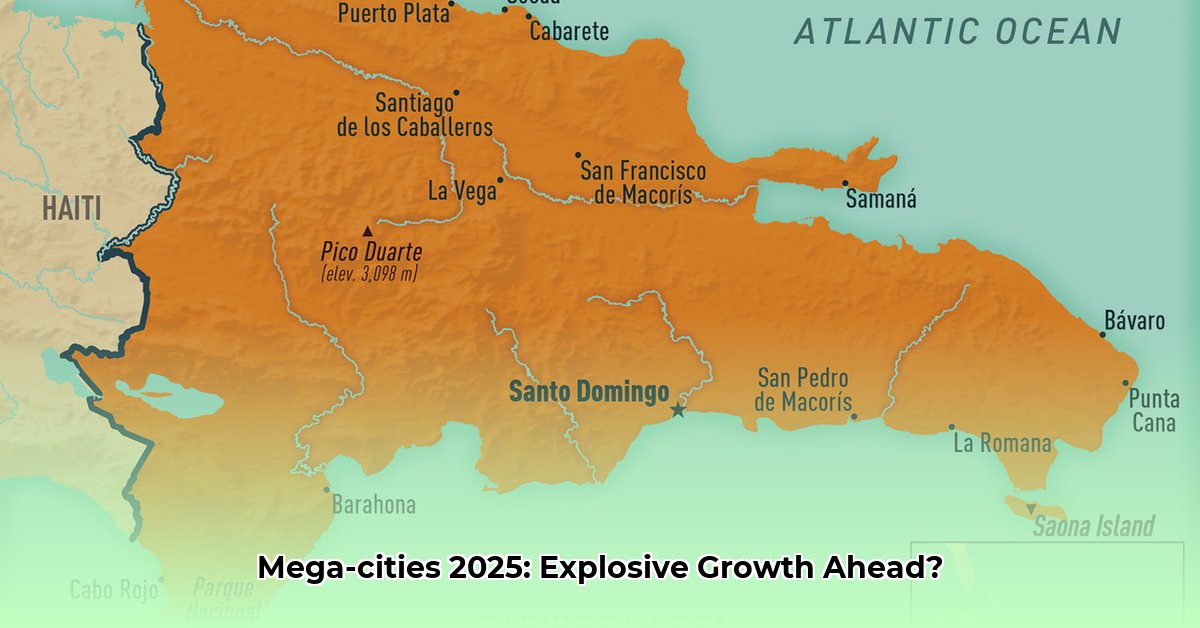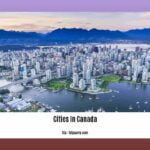Urbanization in the Dominican Republic: Navigating Growth and Data Discrepancies
The Dominican Republic’s rapid urbanization presents both exciting opportunities and complex challenges for urban planners. Accurate population data is the bedrock of effective urban development. However, conflicting figures from various sources create significant obstacles to informed decision-making and sustainable growth. This article explores the intricacies of Dominican urbanization, analyzes the impact of data discrepancies, and proposes a comprehensive strategy for building resilient and sustainable cities. For future population projections, see this 2050 world population map.
Deconstructing the Dominican Urban Landscape
- Unprecedented Growth: The Dominican Republic is on a trajectory of accelerated urban expansion. Projections indicate that the urban population will surge to 92% by 2050, a significant leap from 82.5% in 2020. This rapid influx strains existing infrastructure, resources, and social services. Cities must adapt swiftly and strategically to accommodate this growth while maintaining quality of life. This requires innovative approaches to housing, transportation, waste management, and public health.
- The Data Dilemma: Conflicting population figures from different sources create a significant hurdle for urban planning. Variations in definitions, methodologies, and data collection periods contribute to this inconsistency. A lack of standardized data makes it difficult to accurately assess needs, allocate resources, and measure the effectiveness of urban development initiatives. For instance, defining the boundaries of “urban areas” remains inconsistent, leading to discrepancies in population counts between different reports.
- Forging a Sustainable Path: Achieving sustainable urbanization requires collaborative action. The Dominican government, private sector, international organizations, and local communities must work in concert to create urban environments that are both economically vibrant and environmentally responsible. This involves strategic investments in infrastructure, adoption of sustainable construction practices, and robust capacity-building programs for local professionals. Collaboration is essential to ensure that all stakeholders are aligned with the overarching goal of sustainable urban development.
Confronting Data Inconsistencies: A Roadmap for Improvement
Inaccurate and inconsistent population data undermines effective urban planning. Addressing this challenge demands a multi-pronged approach focused on improved data collection, analysis, and dissemination. The following steps are crucial:
- Unified Definitions: Establishing a clear and consistent definition of “urban area” is paramount. This should encompass factors such as population density, administrative boundaries, and access to urban amenities. A unified definition will ensure that data collection is standardized across different regions and over time. This will also enable meaningful comparisons between cities and facilitate more effective resource allocation.
- Embracing Technological Advancements: Modernizing census methods through technology such as Geographic Information Systems (GIS), mobile technology, and remote sensing will significantly enhance data accuracy. GIS allows for precise mapping of urban areas, while mobile technology facilitates real-time data collection and remote sensing provides valuable aerial imagery for population analysis.
- Open Data and Accessibility: Creating a centralized and publicly accessible database for population data is vital. Open data practices promote transparency, accountability, and informed decision-making. Easy access to reliable data empowers urban planners, researchers, and citizens to contribute to the development of sustainable urban strategies.
- Strengthening Partnerships: Fostering collaboration between government agencies, urban planners, academic institutions, and international organizations is crucial for enhancing data analysis and interpretation. Sharing best practices, knowledge exchange, and capacity building programs will empower local professionals with the skills and resources needed to manage and leverage population data effectively.
- Continuous Monitoring and Research: Urban environments are dynamic. Ongoing research, including regular surveys, statistical modeling, and demographic analysis, is essential to keep pace with urban development trends. This will enable more accurate population projections, proactive planning, and timely interventions.
Building Resilient Dominican Cities: A Sustainable Blueprint
Santo Domingo’s innovative use of nature-based solutions (NBS) and advanced hydrological modeling serves as an inspiring example of climate-resilient urban development. Replicating this success nationwide requires a multi-faceted approach encompassing financial strategies, regulatory frameworks, and capacity building initiatives.
Strategies for Sustainable Urban Growth
- Securing Financial Resources: Sustainable urban development requires substantial investment. Exploring public-private partnerships, innovative financing mechanisms, and international development funding can provide the necessary resources for infrastructure projects, green building initiatives, and capacity building programs.
- Establishing Robust Regulations: Enacting and enforcing comprehensive building codes that promote the use of sustainable materials, energy efficiency, and water conservation are critical. Incentive programs for green building practices can encourage private sector participation in sustainable development.
- Investing in Human Capital: Developing specialized training programs for urban planners, engineers, architects, and construction professionals will equip them with the expertise needed to implement sustainable practices. This includes training in areas such as green building design, renewable energy technologies, and urban resilience planning.
Collaborative Governance: The Role of Key Stakeholders
Effective urban development requires a collaborative approach involving multiple stakeholders.
| Stakeholder | Role in Future-Proofing |
|---|---|
| Dominican Government | Develop national sustainability strategies, secure funding, enact and enforce building codes, coordinate inter-agency collaboration. |
| Local Municipalities | Adapt successful models like Santo Domingo’s NBS approach in other vulnerable areas, engage with local communities, manage local resources. |
| Private Sector | Invest in sustainable materials and practices, adopt green building standards, drive innovation in construction and urban development. |
| International Organizations | Provide technical and financial assistance, promote best practices, support capacity-building initiatives, facilitate knowledge sharing. |
| Communities | Participate actively in planning processes, contribute local knowledge, raise awareness about sustainability, advocate for community needs. |
By embracing these strategies, the Dominican Republic can create thriving, resilient, and inclusive cities that balance rapid growth with environmental sustainability and social equity. Accurate data, strategic planning, collaborative governance, and a commitment to continuous improvement are essential for navigating the complexities of urban development and building a future where cities are both dynamic and sustainable.
- Red Cloud, NE: Discover Willa Cather’s Legacy - April 11, 2025
- Remember Old Social Media Sites? Their Rise and Fall - April 11, 2025
- How many days till Feb 3?Accurate Countdowns & Tools - April 11, 2025
















